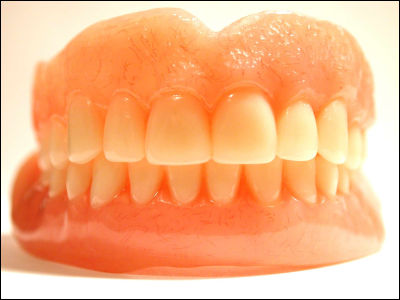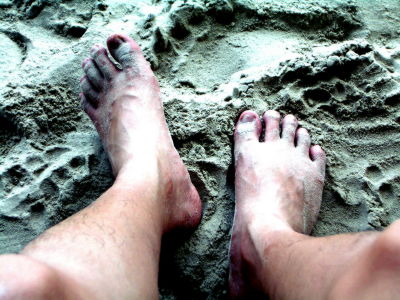'Bone lengthening surgery,' which involves intentionally breaking leg bones to increase height, is becoming popular, but experts explain that it also carries significant risks

Many people in the world believe that 'tall people are popular' and 'short people are socially disadvantaged,' and there are an increasing number of cases of people undergoing 'Ilizarov bone lengthening surgery,' a cosmetic surgery in which leg bones are intentionally broken to increase height. However, bone lengthening surgery, which involves breaking bones, is said to have significant risks, so
Why some people are purposefully having their legs broken by cosmetic surgeons
https://theconversation.com/why-some-people-are-purposefully-having-their-legs-broken-by-cosmetic-surgeons-265015
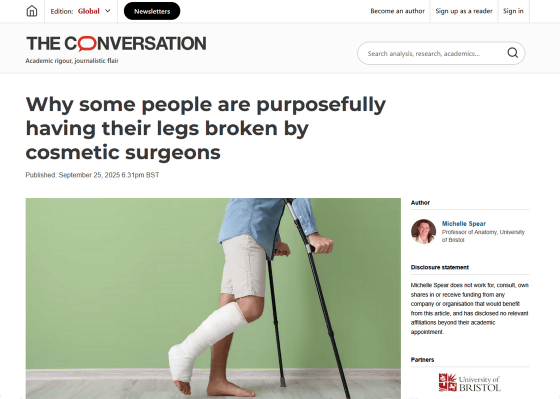
The number of people undergoing bone lengthening surgery is increasing
Distraction osteogenesis is based on a method developed in the 1950s by Soviet orthopedic surgeon Gavril Ilizarov to treat slow-healing fractures and congenital limb deformities. While people who undergo distraction osteogenesis for cosmetic reasons are rare overall and the surgery costs several million yen, demand for the procedure has been increasing in recent years at specialized clinics in the United States, Europe, India, and South Korea.
At some private clinics, the number of people undergoing cosmetic bone lengthening procedures is said to be outstripping the number of medically necessary surgeries , reflecting a cultural shift in which more people are willing to undergo risky surgical procedures to achieve societal height ideals, Speer said.

◆Mechanism of bone lengthening
In a typical distraction osteogenesis procedure, the surgeon makes an incision in the femur or tibia, taking care to leave the bone's blood supply and outer covering (
The cut bone is then connected to an external frame that protrudes from the body, and daily fine adjustments are made to separate the two ends of the bone. In recent years, however, a method of inserting an elastic rod inside the bone itself has also been introduced. By embedding the rod inside the bone, patients are relieved of the discomfort of wearing an external frame and the risk of infection from the wound is reduced, but it is significantly more expensive than an external frame and is not suitable for all patients.
The external frame looks like this:
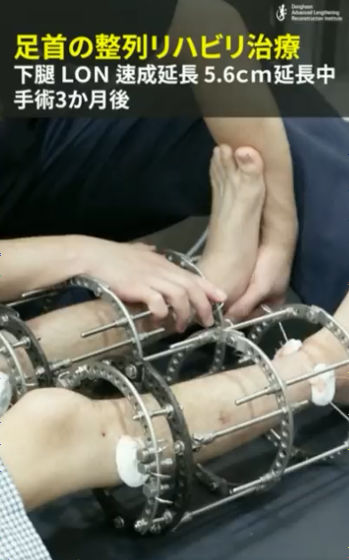
by
Whether an external frame or elastic rods are used, the process is the same. After a short healing period, the surgeon adjusts the device to very slowly separate the bone ends, usually by about 1 mm per day. This gradual separation forces the body to close the gap by creating new bone, a process known as osteogenesis, while simultaneously stretching muscles, tendons, blood vessels, skin, nerves, and more.
A single distraction procedure can increase height by 5-8 cm over a period of several weeks to several months, and some patients will undergo one distraction procedure on the femur and one on the tibia, aiming for a total height increase of 12-15 cm.
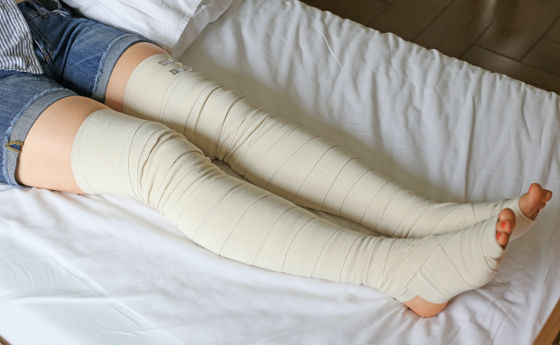
Risks of distraction osteogenesis
'The fundamental challenge of distraction osteogenesis, which involves breaking and slowly lengthening leg bones, is that the body must continually repair the bones that have been separated,' Spear said.
When a bone is broken, a blood clot rapidly forms around the fractured area, and osteoblasts, the cells that build bone, create a callus (cartilage) to stabilize the fracture. Normally, osteoblasts replace the callus with new bone over the course of several weeks, gradually rebuilding the bone to restore strength and shape. However, distraction osteogenesis involves gradually separating the fractured parts, which continually interrupts the body's repair process and delays the hardening of the callus.
Distraction osteogenesis impingement is also known to be extremely painful, and patients often require strong painkillers. Physical therapy is also essential to maintain mobility, but even if the surgery is successful, patients may be left with aftereffects such as muscle weakness, difficulty walking, and chronic discomfort.

Distraction osteogenesis is a long-term procedure that requires recovery for several months, sometimes more than a year, and patients spend most of that time with limited mobility, which places a heavy psychological burden on them. Some patients may become depressed or regret the surgery, especially if they gain a few centimeters in height but do not experience the expected boost in self-confidence.
Muscles and tendons are also forced to stretch beyond their natural capacity, which can lead to stiffness even after recovery. Nerves, unlike bones, cannot regenerate over long distances. Therefore, stretching them more than 6-8% of their resting length can damage nerve fibers and put them at risk of dysfunction. Patients often experience tingling, numbness, or burning pain during the procedure, and the nerve damage can be permanent, Speer explains.
Furthermore, immobilizing a joint for several months can change the forces and weight distribution on the joint, increasing the risk of joint stiffness and arthritis.
'The rise in cosmetic lengthening surgery speaks to a broader trend in cosmetic surgery: increasingly invasive procedures being offered to people without a medical need,' Speer said. 'In theory, anyone can gain a few centimetres in height, but in reality, it means months of fractures, fragile new tissue, gruelling physical therapy, and the constant risk of complications. For those with a medical need, the benefits can be life-changing. But for those simply seeking a slight increase in height, the question remains: Is enduring months of pain and anxiety really worth it?'
Related Posts:
in Free Member, Science, Posted by log1h_ik



